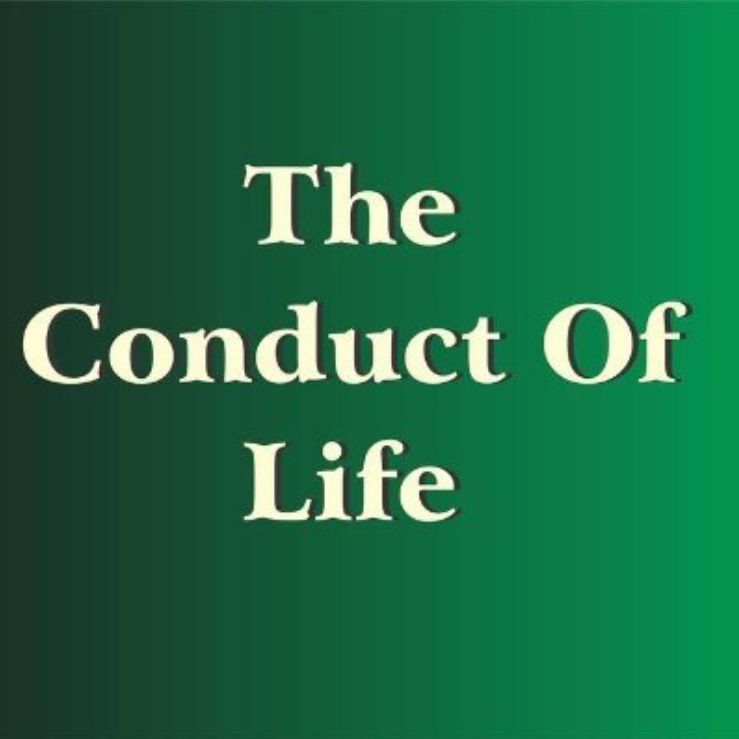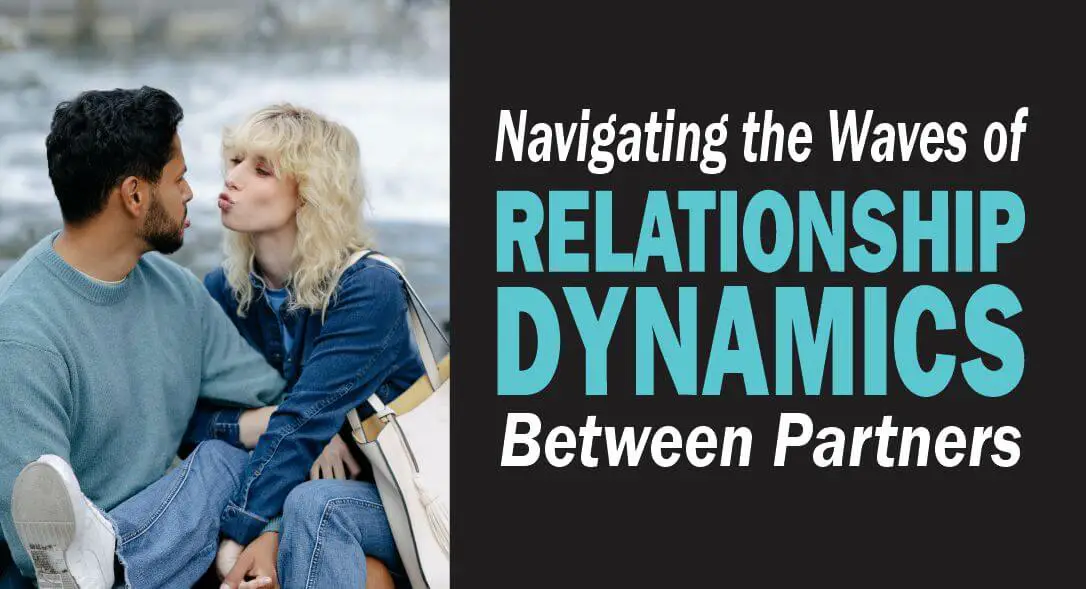Last updated on April 10th, 2025 at 04:01 pm
Relationship dynamics play a huge role in the success or failure of your romantic relationship and being deliberate about your actions is a factor in these dynamics.
The angle and tempo of interactions in romantic relationships can go either way depending on the commitment and the willingness of the participants.
This commitment and willingness are woven into the character of the partners which makes each relationship unique from another.
When you are with a crazy person in a relationship, well … you know what to expect, and when you are with a cool-headed individual, you also know it’s not going to be turbulent.
Relationship dynamics play a vital role in shaping the success or failure of any romantic relationship.
Understanding these dynamics can provide insight to both individuals on how they can improve their communication and interaction, thereby enhancing the quality of their bond.
This article will shine a bright light on the types of relationship dynamics, their importance, and tips for balancing dynamics in your romantic relationships.
Related: Moving on after a Divorce
Table of Contents
- What are Romantic Relationship Dynamics?
- Different Types of Relationship Dynamics
- The Importance of Balancing Relationship Dynamics
- Common Challenges in Relationship Dynamics and How to Overcome Them
- Conclusion
What are Romantic Relationship Dynamics?
Romantic Relationship dynamics refer to the patterns of interaction and communication between individuals in a romantic relationship.
It is the way people behave, think, feel and communicate with each other.
The dynamics in a relationship can impact emotional and mental well-being, and therefore, it is important to identify the underlying factors that drive the behaviors and attitudes between partners.
Through self-consciousness and communication in the relationship, a couple can build a stronger, healthier bond based on mutual respect, understanding, and support.
Related: Understanding Relationship Insecurity
Different Types of Relationship Dynamics

Relationships are an integral part of human life, and it’s important to understand the different dynamics that exist.
These dynamics are infused into our daily interactions without partners and can overlap with each other.
Being deliberate about them is the essence of mindfulness and self-awareness.
There are five types of dynamics to play out in romantic relationships:
1. Power Dynamics
Power dynamics in romantic relationships are the ways power is distributed and exercised between partners.
In some relationships, power may be equally distributed between partners, with both individuals having an equal say in decision-making and an equal ability to influence the relationship.
In other relationships, power may be more unequally distributed, with one partner having more control over the relationship than the other.
Unhealthy power dynamics in romantic relationships can lead to a range of negative outcomes, including feelings of resentment, anger, and frustration.
Here is a dedicated article on the dynamic of power in relationships.
2. Communication Dynamics
Communication dynamics in romantic relationships have to do with the exchange of information, thoughts, and emotions between partners.
Communication is a vital aspect of any relationship, and healthy communication dynamics are essential for building and maintaining a strong and healthy partnership.
This encompasses both verbal and nonverbal communication, and it involves a continuous process of sending and receiving messages.
The dynamics of communication in romantic relationships can be influenced by several factors, such as the level of trust and intimacy between partners, the individual communication styles of each partner, and the context in which the communication is taking place.
Related: Does Taking A Break In A Relationship Help Matters?
Communication dynamics in romantic relationships can be positive or negative, depending on the way that partners communicate with each other.
Positive communication dynamics involve open and honest communication, willingness to listen and understand each other’s perspectives, and the ability to express emotions constructively.
Negative communication dynamics, on the other hand, often involve miscommunication, misunderstandings, and the inability to understand and empathize with each other’s emotions and needs.
By understanding and improving communication dynamics, couples can enhance their relationship and create a stronger foundation for a healthy and fulfilling future together.
Here are the types of communication dynamics that can occur in romantic relationships:
- Assertive Communication: This involves expressing one’s needs and desires clearly and directly, while also respecting the needs and desires of the other partner.
- Passive Communication: This involves avoiding conflict and confrontation by not expressing one’s needs and desires, which can lead to feelings of resentment and frustration.
- Aggressive Communication: This involves expressing one’s needs and desires in a forceful and confrontational manner, which can lead to feelings of anger and hostility.
- Passive-aggressive Communication: This involves expressing one’s needs and desires indirectly, often through sarcasm or other forms of subtle manipulation.
I need to mention that a romantic relationship, or any relationship at all for that matter that will work would need the partners to be deliberate about making it work.
You do not wish your desires in relationships into reality, you act them out.
Some tips for improving communication dynamics in romantic relationships include:
- Practice Active Listening: This involves paying attention to what the other partner is saying, asking questions, and clarifying any misunderstandings.
- Use “I” Statements: This involves expressing one’s feelings and needs in a non-confrontational manner, using phrases like “I feel” or “I need.”
- Avoid Blame and Criticism: This involves refraining from blaming or criticizing the other partner and instead focusing on finding solutions to problems. This does not mean they should not be reprimanded, but the tone and context matters.
- Take Breaks when Needed: This involves recognizing when emotions are running high and taking a break from the conversation to cool down before continuing.
By practicing healthy communication dynamics, couples can build stronger and more fulfilling relationships.

3. Trust Dynamics
Trust dynamics refer to the way trust develops and changes over time in romantic relationships.
Trust is a crucial element of any healthy relationship and it is built and maintained through a myriad of actions and interactions.
In the beginning, trust usually develops through small actions like being honest, following through on promises, and sharing personal information.
The degree of trust one partner has in the other can impact their actions and emotions in a relationship.
However, as relationships progress, trust can evolve or be damaged if one partner believes their trust has been violated.
Trust can be damaged through a range of actions, including lying, cheating, or failing to keep promises, among others.
Related: Overcoming Possessiveness In Relationships: A Guide For Partners
Once damaged, trust can be restored, but it takes time and effort from both partners.
Trust dynamics can also be influenced by external factors such as past relationships, family history, and cultural background.
Open communication, transparent actions, and mutual agreements are important factors in establishing secure trust dynamics that will help maintain a healthy and lasting relationship.
Many different types of trust dynamics can occur in romantic relationships, including:
- Emotional Trust: This involves feeling safe and secure in sharing one’s thoughts, feelings, and emotions with the other partner.
- Physical Trust: This involves feeling safe and secure in physical intimacy with the other partner, and feeling comfortable and respected in setting boundaries.
- Reliability Trust: This involves feeling confident that the other partner will follow through on their commitments and promises.
- Honesty Trust: This involves feeling confident that the other partner is being truthful and transparent in their communication and actions.
Healthy trust dynamics in romantic relationships involve open and honest communication, mutual respect, and a willingness to be vulnerable and authentic with each other.
Some tips for improving trust dynamics in romantic relationships include the following:
- Be Honest and Transparent: This involves being truthful and transparent in one’s communication and actions and avoiding deception or dishonesty.
- Follow Through on Commitments: This involves following through on one’s commitments and promises and being reliable and consistent in one’s actions.
- Respect Each Other’s Boundaries: This involves respecting each other’s physical and emotional limits and avoiding behaviors that violate those boundaries.
- Communicate Openly and Honestly: This involves communicating openly and honestly about one’s thoughts, feelings, and needs, and being willing to listen to and respect the other partner’s perspective.
By practicing healthy trust dynamics, couples can build stronger and more fulfilling relationships, and deepen their connection with each other.
Related: How To Build Emotional Intimacy In Your Marriage
4. Emotional Dynamics
Emotional dynamics refer to the way that emotions are expressed and experienced within a romantic relationship.
It describes the patterns of emotional interaction between two people that can either strengthen or weaken the relationship.
Emotional dynamics in romantic relationships can include expressions of love, joy, anger, fear, frustration, sadness, empathy, and compassion.
These emotions can be positive or negative and can also change over time.
For example, if one partner consistently expresses anger towards the other, it may create tension and resentment within the relationship, leading to a negative emotional dynamic.
However, if each partner can express their emotions honestly and effectively, it can lead to a deeper understanding and connection between them.
Many different types of emotional dynamics can occur in romantic relationships, including:
- Supportive Emotional Dynamics: This involves partners supporting each other emotionally, providing comfort and reassurance during difficult times, and celebrating each other’s successes.
- Unsatisfying Emotional Dynamics: This involves partners feeling emotionally disconnected or unsupported, and experiencing feelings of loneliness or isolation in the relationship.
- Codependent Emotional Dynamics: This involves partners becoming overly reliant on each other for emotional support, and struggling to maintain emotional independence.
Healthy emotional dynamics in romantic relationships involve open and honest communication, mutual respect, and a willingness to be vulnerable and authentic with each other.
Some tips for improving emotional dynamics in romantic relationships include:
- Practice Active Listening: This involves paying attention to what the other partner is saying, asking questions, and clarifying any misunderstandings.
- Express Empathy and Understanding: This involves acknowledging and validating the other partner’s feelings, and expressing empathy and understanding.
- Avoid Blame and Criticism: This involves refraining from blaming or criticizing the other partner and instead focusing on finding solutions to problems.
- Be Willing to Be Vulnerable: This involves sharing one’s thoughts, feelings, and emotions with the other partner, even if it feels uncomfortable or scary.
By practicing healthy emotional dynamics, couples can build stronger and more fulfilling relationships, and deepen their emotional connection with each other.
5. Intimacy Dynamics
Intimacy dynamics in romantic relationships are how partners connect emotionally, physically, and mentally.
Healthy intimacy dynamics are essential for building and maintaining a strong and healthy partnership.
Many different types of intimacy dynamics can occur in romantic relationships, including:
- Emotional intimacy: This involves sharing one’s thoughts, feelings, and emotions with the other partner, and feeling safe and supported in doing so.
- Physical Intimacy: This involves physical touch, such as hugging, kissing, and sexual activity, and feeling comfortable and connected with the other partner.
- Intellectual Intimacy: This involves sharing ideas, thoughts, and interests with the other partner, and feeling intellectually stimulated and engaged.
- Spiritual Intimacy: This involves sharing one’s beliefs and values with the other partner, and feeling a sense of shared purpose and meaning.
Healthy intimacy dynamics in romantic relationships involve open and honest communication, mutual respect, and a willingness to be vulnerable and authentic with each other.
Some tips for improving intimacy dynamics in romantic relationships include:
- Make Time for Each Other: This involves setting aside dedicated time to connect, whether it’s through a date night or simply spending time together at home.
- Practice Active Listening: This involves paying attention to what the other partner is saying, asking questions, and clarifying any misunderstandings.
- Be Willing to Be Vulnerable: This involves sharing one’s thoughts, feelings, and emotions with the other partner, even if it feels uncomfortable or scary.
- Show Physical Affection: This involves physical touch, such as hugging, kissing, and holding hands, and can help to strengthen the emotional connection between partners.
By practicing healthy intimacy dynamics, couples can build stronger and more fulfilling relationships, and deepen their connection with each other.
Tips to Heal from Heartbreak Quickly
The Importance of Balancing Relationship Dynamics

When it comes to romantic relationships, balance is key. One of the most important aspects of a healthy relationship is maintaining a balance in the dynamics between partners.
When this balance is off, it can lead to several problems, including resentment, frustration, and even the eventual breakdown of the relationship.
Having a balance in the relationship dynamics is essential to keeping the relationship healthy, harmonious, and satisfying for both partners.
It ensures that no one partner dominates the other, that both parties’ needs are met, and that the relationship moves forward in a way that benefits everyone equally.
When couples have a good balance, they are better able to communicate effectively, solve problems amicably, and support each other through life’s ups and downs.
Related: Deciding When to Move on After Infidelity By Your Partner
On the other hand, when the relationship dynamics are unbalanced, it can lead to a variety of problems.
For instance, if one partner is consistently making all the decisions, the other one may feel powerless and resentful.
If one partner always takes the lead in communication, the other may feel unheard and unimportant.
When one partner is continually prioritized over the other, the relationship may become one-sided and unsatisfying.
How to Balance Relationship Dynamics
Achieving a balanced relationship takes effort and understanding from both partners. The following are some tips for balancing relationship dynamics effectively:
- Communication: Effective communication is the key to a healthy relationship. Both partners need to learn how to express themselves openly and actively listen to their partner. Communication should be respectful and non-judgmental, allowing each partner to express their true feelings while receiving support from the other.
- Equality: Both partners must be equal in a partnership. No one should feel like they are superior or inferior – both partners should be interested in ensuring that the other has their needs met. Partnership isn’t a dictatorship – it’s a place where the voices of both partners are heard.
- Compromise: Both partners need to be willing to compromise to achieve balance in a relationship. Relationships are a give and take. Sometimes you will need to make sacrifices for your partner, and other times, your partner will need to do the same. When both are willing to compromise, they can solve problems effectively and create a balanced dynamic in the relationship.
- Respect: Respect is of paramount importance in a relationship. Both partners need to respect each other’s feelings, viewpoints, and boundaries. When one partner respects the other, they can establish a healthy environment that values each other’s qualities.
Common Challenges in Relationship Dynamics and How to Overcome Them
Relationships are complex and dynamic, and romantic relationships are even more.
The way power, communication, intimacy, trust, and emotions are distributed and exercised between partners can have a significant impact on the health and longevity of the relationship.
While balancing relationship dynamics is essential for building and maintaining a strong and healthy partnership, there are many common challenges that couples may face along the way, and they are below:
1. Power Imbalances
Power imbalances in romantic relationships can lead to feelings of resentment, anger, and frustration.
One partner may feel like they have more control over the relationship than the other, or one partner may consistently make decisions without consulting the other.
To overcome power imbalances, both partners need to communicate openly and honestly about their needs and desires, set boundaries, negotiate compromises, and work together to find solutions that work for both partners.
2. Communication Problems
Communication problems in romantic relationships can lead to misunderstandings, hurt feelings, and conflict.
One partner may be passive or aggressive in their communication style, or one partner may avoid conflict altogether.
To overcome communication problems, both partners need to practice active listening, use “I” statements, avoid blame and criticism, and take breaks when needed.
3. Intimacy Issues
Intimacy issues in romantic relationships can lead to feelings of disconnection, loneliness, and frustration.
One partner may feel like they’re not getting enough physical or emotional intimacy, or one partner may struggle to be vulnerable and authentic with the other.
To overcome intimacy issues, both partners need to make time for each other, practice active listening, be willing to be vulnerable and show physical affection.
4. Trust Problems
Trust problems in romantic relationships can lead to feelings of insecurity, jealousy, and anxiety.
One partner may struggle to trust the other, or one partner may have broken the other’s trust in the past.
To overcome trust problems, both partners need to be honest and transparent, follow through on commitments, respect each other’s boundaries, and communicate openly and honestly.
5. Emotional Disconnect
Emotional disconnect in romantic relationships can lead to feelings of loneliness, isolation, and dissatisfaction.
One partner may feel like they’re not getting enough emotional support, or one partner may struggle to express their emotions to the other.
To overcome emotional, disconnect, both partners need to practice active listening, express empathy and understanding, avoid blame and criticism, and be willing to be vulnerable.
6. Sexual Issues
Sexual issues can be a significant challenge in relationship dynamics.
Sexual issues can include a wide range of problems, such as differences in sexual desire, difficulty achieving or maintaining an erection, difficulty achieving orgasm, pain during sex, and sexual trauma or abuse.
Sexual issues can lead to feelings of frustration, disappointment, and dissatisfaction in the relationship.
One partner may feel like they’re not getting enough sexual intimacy, or one partner may feel like they’re being pressured into sexual activity they’re not comfortable with.
It can also lead to feelings of shame, embarrassment, and anxiety, which can further exacerbate the problem.
To overcome sexual issues in a relationship, both partners need to communicate openly and honestly about their needs and desires.
This may involve seeking the help of a therapist or sex therapist, who can provide guidance and support in addressing sexual issues.
It’s also important for both partners to be willing to listen to each other and to respect each other’s boundaries.
This may involve exploring new sexual activities or finding ways to make existing sexual activities more enjoyable and fulfilling for both partners.
Conclusion
In conclusion, romantic relationship dynamics play a crucial role in the health and longevity of a relationship.
Power dynamics, communication dynamics, intimacy dynamics, trust dynamics, and emotional dynamics all impact the way partners connect and can either strengthen or weaken the relationship.
Balancing these dynamics is essential for building and maintaining a strong and healthy partnership.
Unhealthy relationship dynamics can lead to a range of negative outcomes, including feelings of resentment, anger, and frustration.
However, by practicing healthy relationship dynamics, couples can build stronger and more fulfilling relationships, and deepen their connection with each other.
Both partners need to communicate openly and honestly about their needs and desires, practice active listening, be willing to be vulnerable and respect each other’s boundaries.
Seeking the help of a therapist or sex therapist can provide a safe and supportive environment for both partners.
It’s an opportunity for them to explore their relationship dynamics and work together to find solutions that work for both partners.
By addressing relationship dynamics in a healthy and supportive way, couples can build a stronger and more fulfilling relationship that will stand the test of time.
6 References
- Vowels, L.M., Mark, K.P. Strategies for Mitigating Sexual Desire Discrepancy in Relationships. Arch Sex Behav 49, 1017–1028 (2020). doi:10.1007/s10508-020-01640-y
- Canevello A, et al. (2011). Creating good relationships: Responsiveness, relationship quality, and interpersonal goals.
ncbi.nlm.nih.gov/pmc/articles/PMC2891543/ - Erol RY, et al. (2014). Development of self-esteem and relationship satisfaction in couples: Two longitudinal studies.
psycnet.apa.org/doiLanding?doi=10.1037%2Fa0037370 - Happy couples: How to keep your relationships healthy. (2020).
apa.org/topics/marriage/healthy-relationships - Lasting Love Connection – Relationship Dynamics: What they are and how to change them.
- Jiannine LM. An investigation of the relationship between physical fitness, self-concept, and sexual functioning. J Educ Health Promot. 2018;7:57. doi:10.4103/jehp.jehp_157_17
Pyo Merez (PsyD) is a distinguished adolescent and adult psychologist at the forefront of mental health advocacy.
With expertise in cognitive and developmental psychology, focusing on social relationships, cultural contexts, and individual differences, Pyo has dedicated his career to empowering adolescents and adults.
As a sought-after speaker and panelist, Pyo shares invaluable insights on issues affecting young people, contributing to a deeper understanding of mental health and well-being in today's society.



This is such a thorough post on relationship dynamics. Learned a ton. Thanks for sharing!
Thanks for stopping by Hari. I am glad you found this post useful.